Wide oak floorboards – Elevating Spaces with Timeless Beauty
The choice of flooring profoundly impacts the character and feel of a home, and among the myriad options available, wide oak floorboards stand out as a perennial favorite. Offering a beautiful blend of history, elegance, and durability, these planks lay a foundation that speaks volumes about style and substance.
Introduction to Wide Oak Floorboards
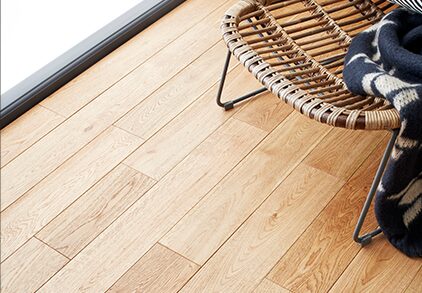
Choosing the right flooring is one of the most significant decisions you’ll make when building, renovating, or simply refreshing a space. It’s the surface upon which all life happens within the home, defining the foundational texture and tone of every room. While many materials vie for attention, wood, particularly oak, holds a unique place in the collective imagination, synonymous with warmth, quality, and lasting appeal. Within the world of wood flooring, the selection of plank width introduces a critical design dimension, and the increasing popularity of boards described as “wide” represents a distinct evolution in aesthetic preference. These expansive boards move beyond the traditional, offering a visual experience that shifts the perception of space and style. Delving into what defines these planks, their historical lineage, and the compelling reasons behind their enduring appeal is crucial to understanding their transformative power in contemporary design.
What Defines “Wide” Oak Floorboards? Defining the measurement. Discuss typical widths vs. traditional widths.
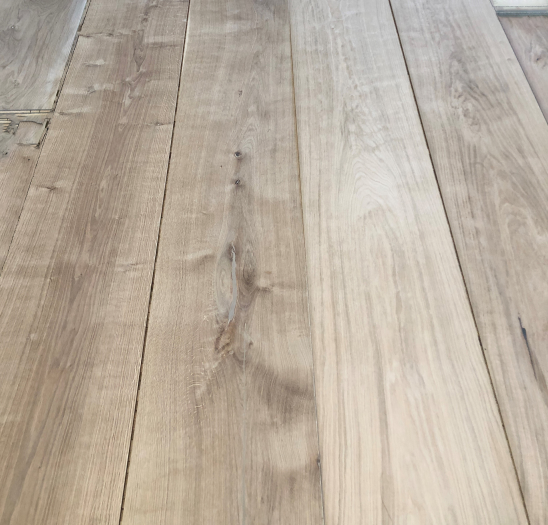
Defining “wide” in the context of oak floorboards isn’t a single, universally agreed-upon measurement, but rather a range that distinguishes them from more common, traditional sizes. Historically, due to limitations in milling technology, the size of trees available, and the need to manage the natural expansion and contraction of wood, floorboards were typically quite narrow, often ranging from 2 to 4 inches wide. These narrow strips allowed for easier drying and helped mitigate the warping and cupping risks associated with wider planks in less predictable indoor environments. They also made efficient use of lumber from smaller, younger trees.
In modern flooring, what was once considered “wide” often started around 5 inches. However, as processing techniques improved, kiln drying became more precise, and engineered wood constructions were developed, the practicable width of floorboards increased significantly. Today, “wide plank flooring” generally refers to boards that are 6 inches or wider. Many suppliers offer widths ranging from 7 to 10 inches, and truly custom installations can feature widths of 12 inches or even more. The definition is somewhat subjective and relative; a 6-inch board might feel “wide” compared to a 3-inch strip, but it might be considered only moderately wide compared to a 10-inch plank. The key is the departure from the historically typical narrow dimensions, moving into a range that significantly alters the visual scale of the floor. This shift reflects not only technological advancements but also evolving design tastes that favor fewer seams and a more expansive look.
The industry standard for what constitutes “traditional” or “strip” flooring is typically in the 2.25 to 3.25-inch range. This was the dominant width for several centuries of interior wood design, especially in the Western world, particularly in the late 19th and 20th centuries when centralized heating became common, requiring more stable flooring formats. These narrow boards are relatively easy to install and manage regarding wood movement, making them a practical choice for mass construction. They create a busy, linear pattern on the floor, which can make rooms feel longer but can also feel visually cluttered in larger spaces.
Conversely, wide oak floorboards represent a deliberate move towards a more considered, less frenetic aesthetic. The absence of numerous seams draws the eye across the floor in a more sweeping motion, creating a sense of calm and visual spaciousness. While a 5-inch board is often the entry point into the “wide” category for many manufacturers today, the real impact of wide planks becomes evident at 7 inches and above. These widths begin to truly differentiate the look from standard flooring, emphasizing each individual plank and the natural characteristics of the wood. The wider the board, the more prominent the grain pattern and knots become within a single piece, turning the floor into a less uniform surface and more of a canvas showcasing the tree’s natural story. This distinction between traditional narrow strips and contemporary wide planks highlights a fundamental divergence in both manufacturing capability and prevailing design philosophy, favoring broad strokes over repetitive patterns.
A Brief History: Tracing the origins and evolution of wide plank flooring. Historically why wasn’t it more readily available?
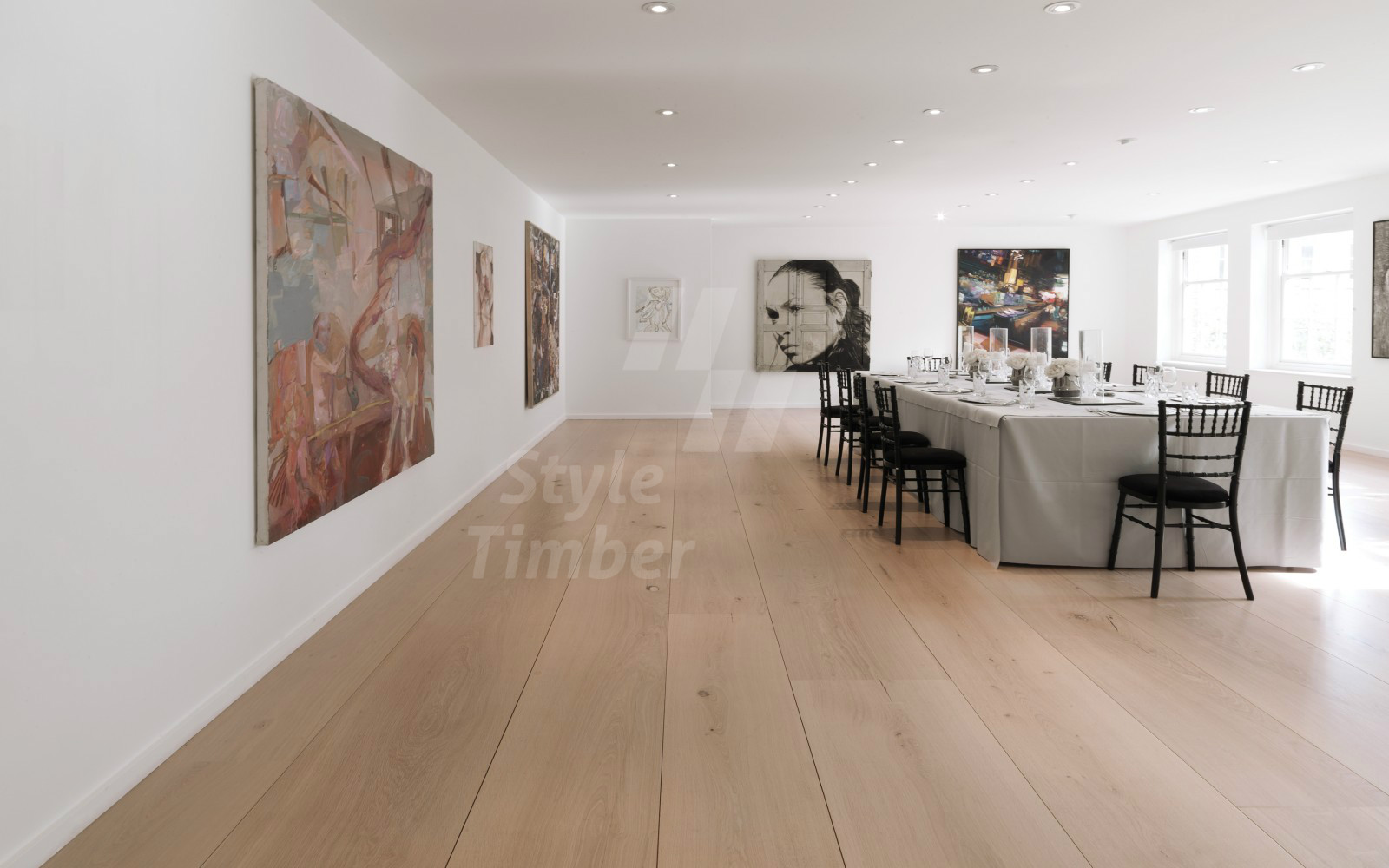
The origins of wide plank flooring are deeply rooted in the availability of resources and early construction methods. In times when timber was harvested from old-growth forests containing trees of immense size, it was natural and efficient to cut lumber into wide, thick planks for structural use and flooring. Picture early colonial homes in North America or medieval European buildings; their floors were often composed of boards as wide as the tree would allow, sometimes two feet or more across. These planks weren’t merely cosmetic; they were integral parts of the building’s structure, laid across joists to form a sturdy walking surface. The aesthetic was born out of necessity and the direct utilization of readily available, massive raw materials. These early floors have a rustic, authentic appeal, reflecting the straightforward approach to building before sophisticated milling and drying techniques were widely adopted.
However, despite the existence of these impressive early examples, wide plank flooring did not remain the standard throughout history. Its widespread availability was significantly limited for several key reasons. Firstly, as forests were logged, particularly old-growth stands, the average size of trees harvested decreased. It became less common and more expensive to find trees large enough to yield consistently wide, clear planks. Sawmilling technology also played a crucial role; early sawmills, though capable of cutting large logs, were less efficient at producing large quantities of evenly thick, flat wide boards compared to narrower cuts. Handling, drying, and transporting large, heavy planks also presented greater challenges. Kiln drying, which allows for precise control of moisture content necessary to stabilize wider boards, was not a widespread technology until relatively recently in the grand scheme of timber use.
The most significant impediment to the historical prevalence of wide plank flooring, beyond resource availability and milling, was the inherent nature of wood and the challenges of controlling its movement. Wood is a hygroscopic material, meaning it absorbs and releases moisture based on the surrounding humidity. This leads to expansion in humid conditions and contraction in dry conditions. The wider a solid wood board is, the more it will expand and contract across its width. In the absence of climate control within homes, this movement could cause significant issues like cupping (edges curling upwards), crowning (center rising), splitting, and gaps between boards. Narrower boards, having less total width to expand/contract, are inherently more stable and less prone to dramatic dimension changes that cause flooring failures.
The widespread adoption of narrow strip flooring in the 19th and 20th centuries was a direct response to these challenges, coinciding with more efficient milling practices and the growth of urban areas requiring standardized, easily installable building materials. Narrow planks were easier to dry uniformly, easier to mill quickly from smaller logs, less susceptible to noticeable movement issues in homes lacking central heating or air conditioning, and simpler to install with basic tools. Wide plank flooring became a specialty item, often found only in bespoke, high-end projects or restorations, a luxury reserved for those who could source the timber and manage the installation complexities. It took advancements in drying technology, the development of engineered wood products that offer greater dimensional stability, and modern climate control in buildings for wide planks to become a readily accessible and practical option for a broader market, allowing this historically significant aesthetic to enjoy a resurgence in popularity.
The Aesthetic Qualities: Exploring the visual impact, spaciousness, and elegance they bring to a room. How wide planks can enhance different interior design styles (e.g., farmhouse, modern, rustic).

The aesthetic power of wide oak floorboards lies precisely in their scale. Unlike narrow strip flooring which creates a busy, linear pattern with numerous joints, wide planks dramatically reduce the number of seams across the floor’s surface. This creates a more expansive, less visually interrupted plane that instantly imparts a sense of calm and spaciousness to a room. The eye is allowed to sweep across the floor without being constantly drawn to the breaks between boards, fostering a feeling of openness and flow. This visual simplification is a key factor in their appeal, particularly in larger rooms where narrow strips can sometimes feel overwhelming or repetitive. Each wide board becomes a significant element, showcasing more of the individual tree’s character, grain patterns, and natural variations than would be visible on a smaller piece.
This emphasis on the individual plank and the natural wood beauty lends wide oak floorboards an inherent elegance that feels both understated and luxurious. It’s an aesthetic that speaks to quality and craftsmanship, evoking the look of older, substantial homes while fitting seamlessly into contemporary designs. The broad surface area allows the natural grain of the oak, whether the tight, straight lines of quarter-sawn white oak or the swirling, dramatic patterns of plain-sawn red oak with character knots, to become a prominent feature. This isn’t just a floor covering; it’s a design element in its own right, contributing significantly to the overall ambiance of a space. The visual weight of the wider boards can also help to ground a room, providing a solid, stable base for the furniture and décor placed upon it. This foundational quality is particularly effective in spaces with high ceilings or open-plan layouts, where a strong floor presence is needed to balance the vertical or expansive nature of the room.
The versatility of wide oak floorboards allows them to enhance a diverse array of interior design styles, acting as a unifying element or a defining feature depending on the chosen finish, grade, and species. In a farmhouse style, wide planks in a warm, natural tone or a gently distressed finish are practically essential. They instantly evoke the rustic charm and historical authenticity of country living, providing a durable and beautiful surface that feels rooted in tradition. The fewer seams and larger boards align perfectly with the often simpler, more robust furniture and textiles characteristic of farmhouse décor. Knots and character marks, often embraced in lower grades of oak, add to this authentic, lived-in feel.
For modern interior design, wide oak floorboards can bring essential warmth and texture to often minimalist spaces. While traditionally associated with classic styles, selecting a select grade white oak with a very clean, straight grain and a contemporary finish (like a matte or invisible lacquer) creates a sophisticated, streamlined look. The wide format maintains the clean lines inherent in modern design, while the natural wood adds an organic element that prevents the space from feeling sterile or cold. Paired with sleek furniture and a neutral color palette, wide oak provides a timeless foundation that grounds futuristic or simple aesthetics. In rustic interiors, wide oak with significant character – pronounced knots, mineral streaks, and natural color variations – is paramount. Often finished with oils or natural stains to enhance the wood’s texture, these floors contribute significantly to the cozy, earthy, and authentic feel of spaces that celebrate natural materials and imperfections. Whether used in a loft, a cabin, or a family home, the visual weight and natural beauty of wide oak effortlessly enhance these diverse stylistic expressions, proving their adaptability and enduring design relevance across the spectrum of interior aesthetics.
Advantages Beyond Aesthetics: Briefly touch on structural benefits and value appreciation.
While their stunning look is arguably the primary driver of interest, wide oak floorboards offer compelling advantages that extend beyond mere aesthetics, contributing to both the practical functionality and long-term financial value of a property. From a structural perspective, particularly with solid wide planks laid over suitable joists or subfloors, they provide a very robust and durable walking surface. The thickness and width of the individual boards contribute to a feeling of solidity underfoot that thinner or narrower flooring materials may not replicate. While wide solid boards require careful installation to mitigate movement, when properly fitted, they form a strong, interlocked plane that can withstand significant wear over decades. Engineered wide oak, with its cross-ply construction, offers exceptional dimensional stability, making it less susceptible to gapping or cupping in environments with fluctuating humidity, thus providing a structurally reliable and visually consistent floor over time.
Beyond their inherent durability and stability when properly installed, wide oak flooring is a significant investment that typically appreciates the value of a home. Hardwood floors in general are highly sought after by homebuyers, perceived as a mark of quality and luxury. Wide plank oak, with its upscale appearance and connection to both historical precedent and modern high-end design, often commands a premium compared to standard strip oak or other flooring materials like carpet, laminate, or vinyl plank. It signals to potential buyers that the home features quality materials and craftsmanship from the ground up. Unlike trend-driven finishes that can quickly become dated, wide oak flooring possesses a timeless appeal that doesn’t fade with changing styles, making it a safe and desirable long-term asset.
The longevity of a properly installed and maintained wide oak floor also translates directly into value. A quality oak floor can last for generations, often capable of being refinished multiple times over its lifespan to refresh its appearance or change its color. This durability means less need for costly replacement compared to materials with shorter lifespans, offering significant savings over the decades. The perceived value is not just about the material cost but about the investment in a feature that enhances the home’s appeal, functionality, and marketability for the foreseeable future. For homeowners, this means enjoying a beautiful, stable floor for years while building equity; for those looking to sell, it means a more attractive property likely to sell faster and for a higher price. Thus, the decision to install wide oak floorboards is not just a design choice but a sound financial one, adding both tangible performance benefits and intangible market value to the property equation.
Types of Wide Oak Floorboards
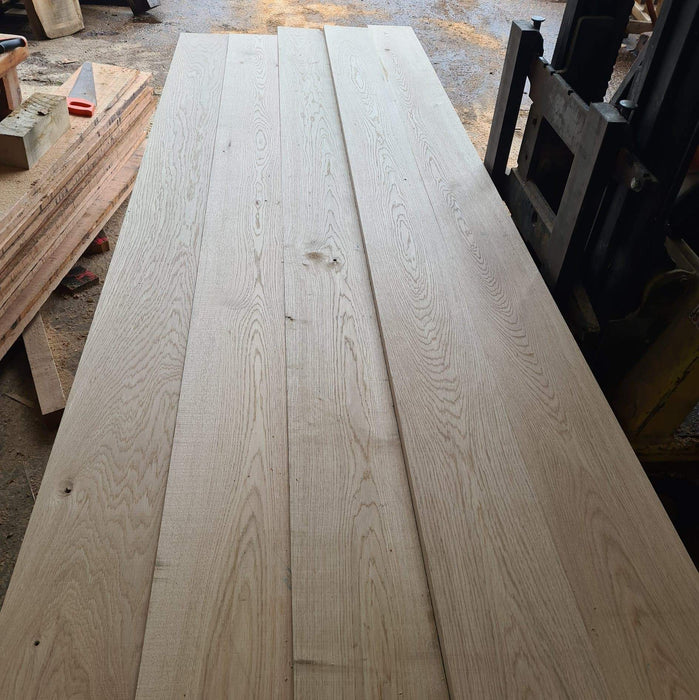
Understanding the diversity within the category of wide oak floorboards is crucial for making an informed decision that aligns with your specific needs, budget, and the characteristics of your installation environment. The term “wide oak” encompasses various constructions, finishes, species, and quality levels, each offering distinct properties and aesthetic profiles. From the foundational choice between solid and engineered structures to the myriad options in surface treatments and the inherent characteristics of different oak types and grades, the breadth of selection allows for remarkable customization. Navigating these various types helps ensure you select a floor that not only looks beautiful but also performs optimally in your home’s unique conditions, providing durability and satisfaction for years to come. Each variation brings its own set of advantages and considerations, influencing everything from installation methods and maintenance requirements to the final look and feel of the finished floor.
Solid Wide Oak Planks: Description of solid wood construction. The benefits of solid oak and potential drawbacks (e.g., expansion/contraction). Ideal environments for solid wide planks.
Solid wide oak planks are exactly what their name suggests: each board is milled from a single piece of oak timber, from top to bottom. This is the most traditional form of wood flooring, representing lumber in its most fundamental application. The thickness of the board can vary, but standard solid flooring is typically 3/4 inch thick, providing a substantial wear layer that allows for multiple refinishes throughout its lifespan. The width of discussion here, as established, would be anything significantly wider than 3-4 inches, often 6 inches and upward. The manufacturing process involves sawing the log, drying the lumber in a kiln to reduce moisture content, and then milling the boards with tongue and groove edges (and sometimes ends) to allow them to interlock when installed. The face of the board may be flat or have a micro-bevel at the edges.
The primary benefits of solid oak, especially in a wide plank format, revolve around its authenticity, longevity, and aesthetic depth. Solid wood is the genuine article; its feel underfoot and its natural variation are unparalleled. The substantial thickness means it can be sanded and refinished many times – potentially four to six or even more, depending on the remaining wear layer above the tongue – restoring its appearance after decades of wear or allowing for dramatic color changes. This makes a solid wide oak floor a multi-generational investment, a surface that can evolve with the home and its occupants. Aesthetically, the single-piece construction allows for a consistent presentation of the wood’s grain and color throughout the thickness of the board, resulting in a rich, classic look that many purists prefer. There’s a certain gravitas and permanence associated with solid wood that other materials struggle to replicate.
However, the significant drawback of solid wide oak planks stems directly from their homogenous nature: their susceptibility to dimensional changes caused by fluctuating humidity. As a natural material, wood absorbs and releases moisture, causing it to expand and contract. The movement occurs primarily across the width of the board. The wider the plank, the greater the absolute amount of expansion or contraction. In homes with unstable humidity levels – very dry in winter, very humid in summer, especially without consistent climate control – this movement can lead to noticeable gapping between boards during dry periods and potential cupping or buckling if humidity is excessive and expansion is constrained. This natural behavior requires careful management during installation, including proper subfloor preparation, acclimation, and leaving adequate expansion gaps around the perimeter.
Given their sensitivity to moisture fluctuations, solid wide oak planks are ideally suited for installation above grade (not in basements) and in environments where humidity levels can be relatively well-controlled, typically maintained between 35-55% year-round. They perform best over stable wood subfloors (like plywood or OSB) where they can be nailed or stapled down, providing a secure mechanical fastening that accommodates some movement. Spaces with stable environments, such as living rooms, dining rooms, bedrooms, and offices that are consistently heated and cooled, are excellent candidates for solid wide oak. Structures built on slabs or in high-moisture areas like basements prone to dampness are generally not suitable environments for solid flooring due to the risk of moisture migration causing significant damage. The timeless beauty and refinishing potential make solid wide oak a superb choice for traditional homes or anyone seeking a truly authentic, long-lasting floor, provided the installation location and environmental conditions are properly considered and managed.
Engineered Wide Oak Planks: Construction details of engineered wood. Benefits of engineered planks (stability, versatility). Suitability for different subfloors and climates.
Engineered wide oak planks represent a modern marvel in wood flooring technology, designed to mitigate the primary weakness of solid wood: dimensional instability. Instead of a single piece of oak, engineered planks are constructed from multiple layers bonded together under high pressure. The top layer, known as the lamella or wear layer, is a slice of genuine oak hardwood, typically 2mm to 6mm thick. Below this is the core layer, which is the key to its stability. The core is usually made from multiple cross-grain layers of plywood, high-density fiberboard (HDF), or sometimes a combination of softwoods engineered for stability. These core layers are oriented with their grain running in different directions, which counteracts the natural expansion and contraction of the wood, making the overall structure much more stable than solid wood. Finally, there’s often a backing layer on the bottom, which helps balance the construction and prevent warping.
The benefits of engineered wide oak planks are numerous, chief among them being vastly improved dimensional stability and greater installation versatility. Because of their layered, cross-ply construction, engineered boards are far less susceptible to warping, gapping, and cupping caused by changes in temperature and humidity. This makes them a much safer choice for environments where solid wood is risky, such as basements, rooms below grade, or areas with fluctuating or higher-than-ideal humidity levels. The stability also allows them to be produced in significantly wider widths (often exceeding 10 and 12 inches readily) without the same risk of movement issues that plague wide solid boards, enabling even more expansive looks. Furthermore, the use of a thinner top layer of oak means less precious hardwood is consumed compared to a full 3/4 inch solid board, making it a more sustainable option by some measures, though this is debatable depending on the core material used.
Engineered wide oak’s versatility extends significantly to installation methods and suitability for different subfloors and climates. Unlike solid wood, which is primarily limited to nail-down installation over wood subfloors, engineered flooring can be installed in multiple ways. It can be nailed or stapled to wood subfloors, glued down directly onto concrete slabs (a common and difficult subfloor for solid wood), or installed as a floating floor system over various subfloors including concrete, plywood, or existing resilient flooring. This flexibility makes it an ideal choice for a wide range of project types, renovations, and new builds, especially in areas where solid hardwood installation is impractical or prohibited. Its enhanced stability allows it to perform well in climates with more extreme seasonal variations in humidity or in homes without stringent climate control, reducing the stress and potential damage caused by environmental fluctuations.
While the wear layer of engineered oak is thinner than a solid board, its thickness determines how many times it can be refinished. Boards with a 4mm or 6mm wear layer can often be sanded and refinished two or possibly three times, offering a lifespan comparable to solid wood for most homeowners. Boards with thinner wear layers (2mm or 3mm) may only tolerate a light screening or no refinishing, limiting their long-term potential but often coming at a lower cost. This range of options allows consumers to choose engineered wide oak planks that match their budget and expected lifespan requirements, ensuring they get the beautiful, stable wide-plank look with the practical performance needed for their specific living environment. The blend of authentic oak aesthetics with advanced structural stability makes engineered wide oak a leading choice in modern flooring.
Distressed vs. Unfinished vs. Pre-finished: Detailing the different appearances and treatments. Pros and cons of each finish type (durability, maintenance).
The surface treatment and finish applied to wide oak floorboards dramatically influence their final appearance, feel, durability, and maintenance requirements. Sorting through options like distressed, unfinished, and pre-finished planks allows homeowners to tailor the floor’s aesthetic to their personal taste and practical needs. Each offers a distinct look and comes with its own set of advantages and considerations regarding installation, longevity, and care.
Unfinished wide oak floorboards are delivered to the job site raw, without any stain or protective coating. The installation process involves laying the bare wood, then sanding, staining (if desired), and applying a finish coat on site. This method offers the highest degree of customization. Homeowners have complete control over the stain color and the type of finish applied, allowing for a truly bespoke look that can be precisely matched to other wood elements in the space or to achieve a unique color never found in pre-finished options. It also results in a smoother, more monolithic surface because the sanding done after installation levels any minor height variations between boards and eliminates the micro-bevel typically found on pre-finished edges. This creates a very traditional, smooth floor face. The cons include a messier and longer installation process due to the sanding and finishing steps requiring significant dust control and drying time. On-site finishes can also be more sensitive to environmental conditions like humidity during application.
Pre-finished wide oak floorboards arrive at the installation site with the stain and protective finish already applied at the factory. These finishes are typically cured under controlled conditions using UV light or other industrial methods, resulting in an exceptionally durable and consistent coating. The primary benefits are a faster, cleaner installation process without the dust and fumes of on-site finishing. The floor is ready to walk on much sooner. Factory finishes are often harder and more wear-resistant than site-applied finishes, offering excellent durability against scratches and daily wear. Many pre-finished boards feature a micro-bevel on the edges, which helps mask slight imperfections in the subfloor and makes installation easier by accommodating minor height variations. However, the aesthetic choices are limited to the manufacturer’s available colors and finishes. While selection is vast, you don’t have the infinite customizability of unfinished wood. Also, the micro-bevel creates slight grooves between boards, which some people find less desirable than the flat surface of a site-finished floor.
Distressed wide oak floorboards can be either unfinished or pre-finished, but the defining characteristic is that the wood has been intentionally aged or textured using mechanical or manual techniques before installation. This includes processes like wire brushing (to enhance the grain texture), hand-scraping (to create a wavy, aged appearance), or applying intentional dents, divots, or wormholes. The goal is to replicate the look of old, time-worn floors or to add character and a rustic feel. Distressing helps to hide minor scratches and dents that might occur naturally over time, making it a very practical choice for high-traffic areas or homes with pets and children. It adds personality and depth that cannot be achieved with smooth, clean boards. The appeal of distressed flooring is subjective; some love the aged look, while others prefer a cleaner, more contemporary aesthetic. The level and type of distressing vary widely between manufacturers, offering numerous options from subtly textured to heavily aged. Pre-finished distressed boards combine the character of distressing with the convenience and durability of a factory finish, offering a popular balance for those seeking both style and practicality.
Oak Species: Examining different oak species commonly used (e.g., white oak, red oak). Discuss the variations in grain patterns, color, and hardness.
When choosing wide oak floorboards, the specific species of oak is a critical factor, as it dictates the inherent physical properties, color characteristics, and grain patterns that will define the floor’s appearance and performance. The most common species used in flooring are Red Oak and White Oak, though they exhibit distinct differences that significantly impact the final look and feel of a wide plank floor. Understanding these variations is key to selecting the oak that best suits your design vision and practical needs.
Red Oak (Quercus rubra and related species) is the traditional standard for hardwood flooring in North America and is widely available. Its defining characteristic is its reddish or pinkish undertone, which becomes more prominent especially when certain finishes are applied or as the wood ages. While often stained in darker colors that mask this red hue, it’s important to consider if you plan on lighter finishes or a natural look. Red oak has a distinctive, swirling grain pattern with prominent rays and flecks, which tends to be quite visible, especially in wider boards. Its hardness is measured on the Janka scale, typically around 1290, making it a durable material suitable for most residential applications, capable of withstanding the wear and tear of daily life. The porous nature of red oak (it has open pores or vessels) means it absorbs stains readily, offering a wide range of potential color outcomes, though this also means it’s less resistant to moisture than white oak.
White Oak (Quercus alba and related species) has seen a significant surge in popularity in recent years, particularly for modern and minimalist design styles. In contrast to red oak, white oak has a cooler, more muted, brownish or grayish undertone, lacking the same reddish casts. This neutral base allows for a wider range of staining options, including popular gray or natural finishes that are difficult to achieve without counteracting the red tones of red oak. White oak is known for its tighter, straighter, and more linear grain pattern, often exhibiting dramatic ray flecks, especially when quarter-sawn. This cleaner, less busy grain contributes to the sophisticated look often desired in contemporary designs. On the Janka scale, white oak is slightly harder than red oak, typically around 1360, offering marginally improved dent resistance. Unlike red oak, white oak has closed pores or vessels, making it more resistant to moisture penetration and rot, which historically made it thepreferred choice for applications like boat building and outdoor furniture. This moisture resistance also makes white oak an excellent option for areas with fluctuating humidity levels, such as basements or kitchens.
When considering wide oak floorboards, the choice between red and white oak will depend on your design sensibilities and practical considerations. Red oak’s bold grain can create a warm and inviting atmosphere, making it well-suited for traditional or rustic interiors. Its affordability and availability make it a popular choice among homeowners looking for a classic hardwood look. Conversely, white oak’s modern aesthetic appeals to those who favor clean lines and understated elegance, fitting seamlessly into contemporary spaces. Furthermore, if you are concerned about moisture or have pets that may contribute to wear and tear, the durability of white oak might be worth the investment.
In addition to these primary species, other types of oak, such as live oak, pin oak, and swamp oak, may also be available but are less common in flooring applications. Each type has its unique characteristics and should be considered based on specific project requirements, including color, grain, and hardness. Exploring various oak species will allow you to find the right match for your vision, ensuring a beautiful and lasting foundation for your home.
Grading of Oak: Describing different grading systems and what they mean (e.g., character grade, select grade). Impact of grading on appearance and price.
Once you’ve decided on the oak species for your wide floorboards, understanding the grading system becomes essential. The quality grading of oak affects not just the aesthetics but also the overall cost and suitability for your intended application. Generally, oak is graded based on its appearance, which includes factors like color variation, the presence of knots, and the overall grain patterns. The most common grading systems include Select Grade,
Select Grade oak represents the highest quality available. It features minimal imperfections, with consistent color and grain patterns. Boards in this category are typically free from knots and other defects, showcasing the natural beauty of the wood. Select Grade is ideal for homeowners seeking a polished, professional look in their flooring. However, this high level of quality comes with a premium price tag, appealing to those who view it as an investment in their home’s aesthetic value.
Character Grade oak takes a different approach by emphasizing natural imperfections as part of the wood’s charm. This includes prominent knots, color variations, and distinctive grain patterns, resulting in a highly individualistic appearance. Homeowners opting for Character Grade often appreciate the story behind each board, seeing the beauty in its flaws. Prices for this grade tend to be lower than higher-quality options, making it a fantastic choice for large spaces or projects on a budget.
Beyond aesthetics, the grading of oak also influences the installation process. Higher-grade boards are generally more uniform in size and shape, making them easier to install with fewer adjustments required. On the other hand, lower-grade boards may require additional time and effort during installation due to the need to sort through pieces for consistency. By evaluating the appropriate grading for your needs, you can tailor your selection to achieve both the desired look and budget.
Video
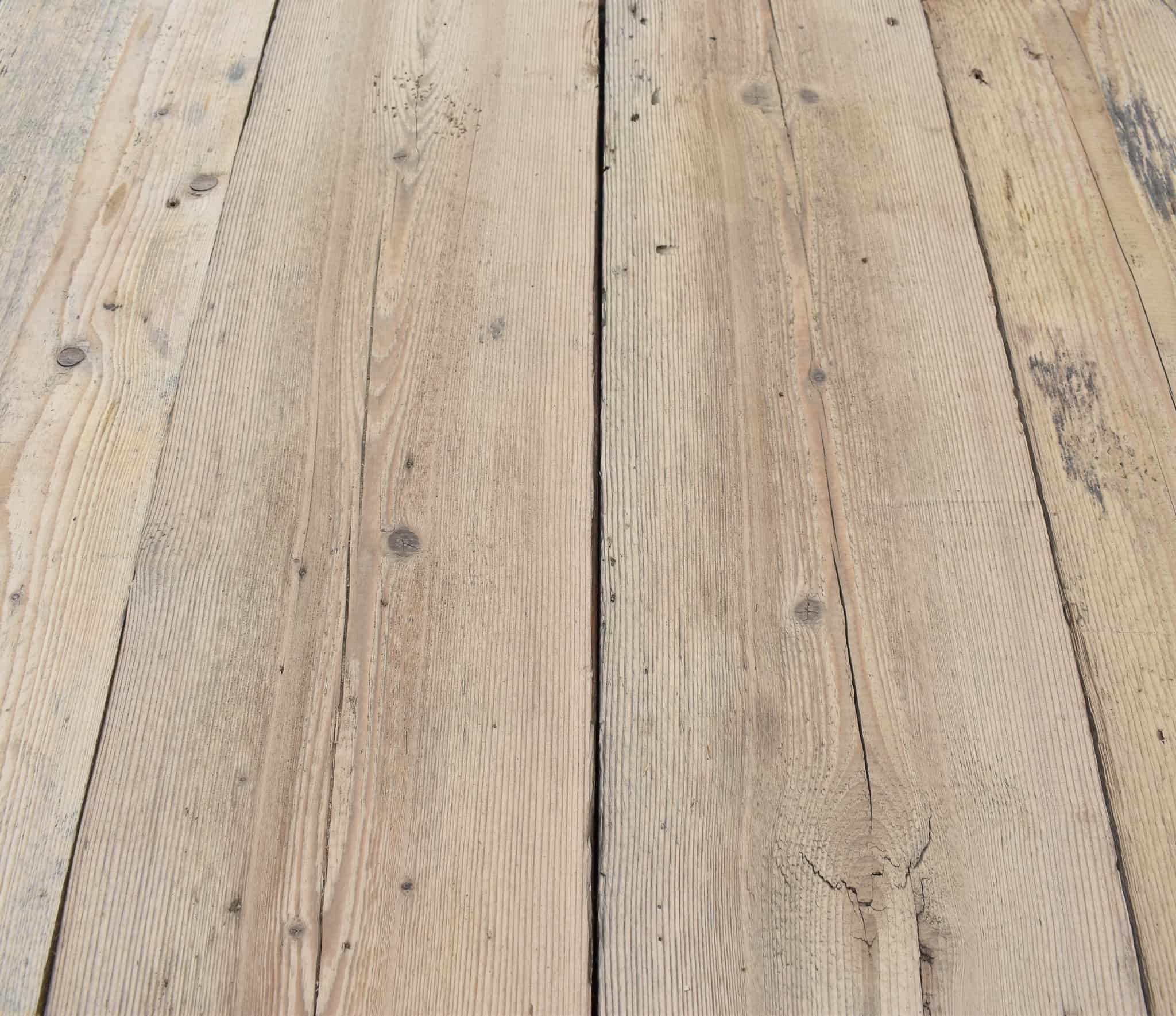
Video source from Youtube
Conclusion

As we’ve explored throughout this guide, wide oak floorboards are a timeless choice that beautifully balances aesthetics, functionality, and value. From understanding the nuances of oak species and grading to recognizing the benefits of solid versus engineered options, careful consideration allows homeowners to choose the flooring that perfectly aligns with their design vision and practical needs.
Whether you prefer the modern, sleek allure of white oak or the rich warmth of red oak, the possibilities for personalization in terms of finishes, styles, and installation methods make wide oak flooring adaptable to virtually any interior design theme. Additionally, the long-term value and durability of quality oak ensure that your investment stands the test of time, both aesthetically and functionally.
With proper care and maintenance, wide oak floorboards will not only elevate the ambiance of your space but will also garner admiration and appreciation for years to come. In essence, the decision to incorporate wide oak floorboards into your home is not merely about choosing a surface material; it’s about creating a lasting legacy of beauty and comfort within your living environment.
Read also : Mastering Decking Secrets with Step Clip Decking – A Full Guide
